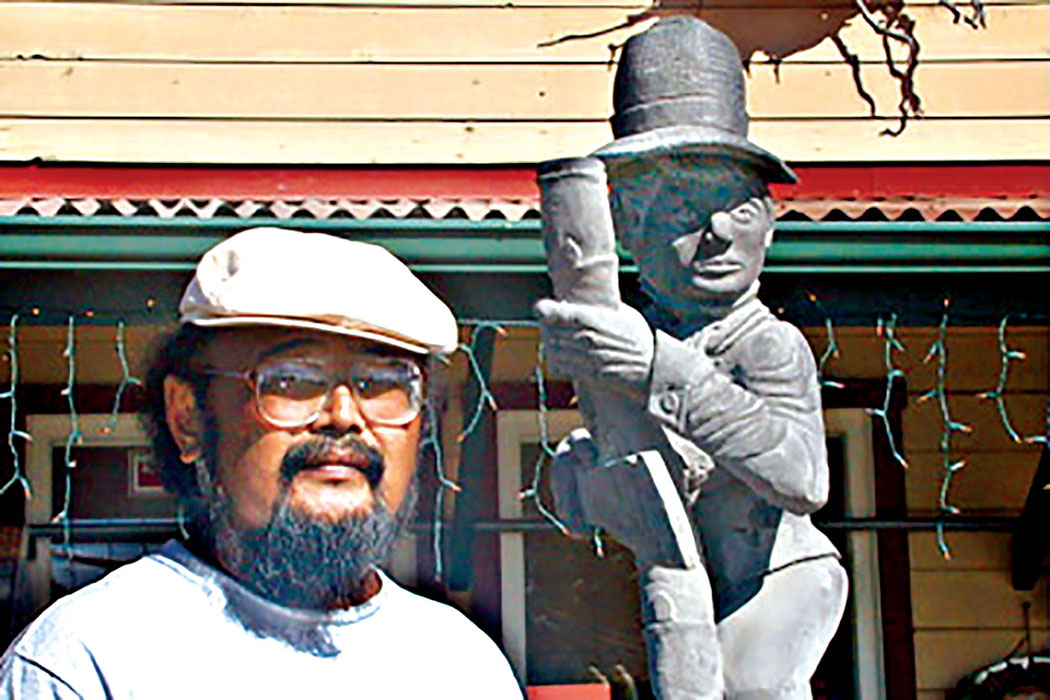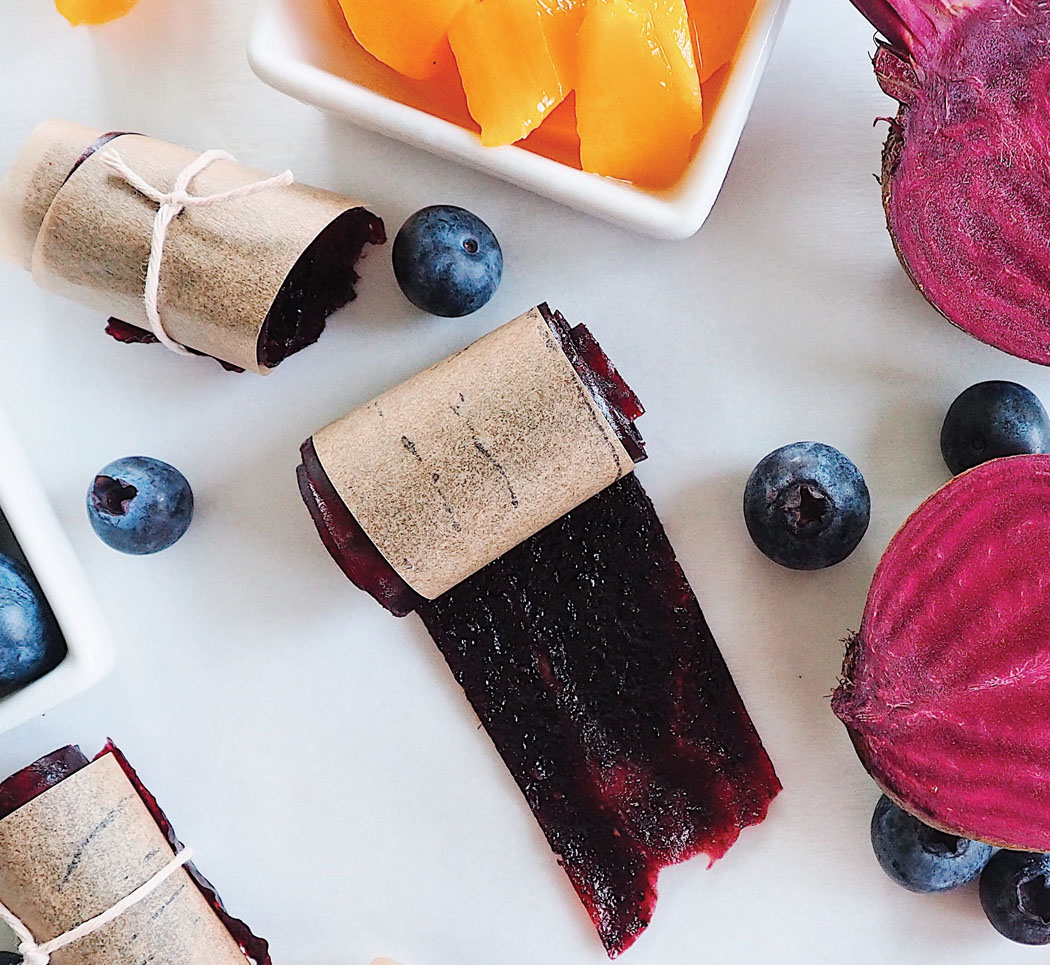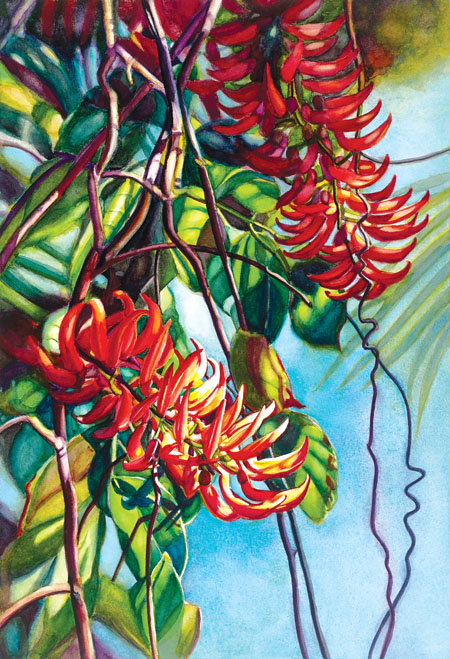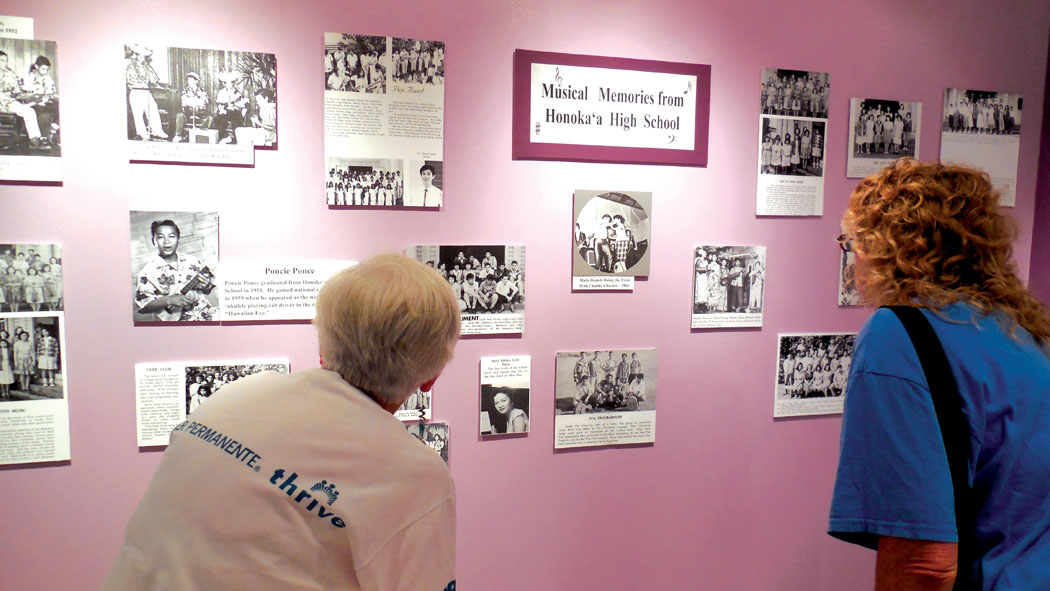
North Hawai‘i Research Center’s Heritage Center: Cultural Community Connections

By Jan Wizinowich
Through the vision of a community to preserve and share the stories of the land and its people, the Heritage Center (HC) came into being in 2011.
Hawai‘i Island’s story begins with its settlement by a people who connected deeply with the land and established traditions that perpetuated the well-being of both the land and its people. These traditions and the spirit of the land, blended with stories of the many who came later, form a constellation of histories that are being preserved by the HHC.
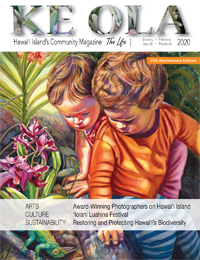
Headed up by curator Dr. Momi Naughton, whose life work has been multicultural historic preservation, the center is a blend of academic excellence and cultural community history. From its inception, Momi met with a community advisory board made up of a spectrum of people from all walks of life who continues to guide the direction of the center.
“It’s evident that the community is engaged and taking ownership of their past through the Heritage Center because nearly every day someone comes in with an old photo album and memories to share,” said Momi.
At the heart of the HC, an adjunct to the North Hawai‘i Education and Research Center (NHERC) which opened in 2006, and now part of Hawai‘i Community College (HCC), is a permanent exhibit featuring the history of the lineal descendants of the land as well as the many ethnic groups who came to work at the sugar plantations.
The first section in the permanent gallery highlights Mauna Kea, which has been foundational to Hawaiian spiritual practices and is home to important entities such as the goddess Poli‘ahu, whose mantle of snow and mist cloaks the mountain.
“The culture is still alive and there is legitimate cosmology. The thing is to look at different ways of knowing, different ways of interpreting. It’s very obvious when you look at the chants and the story of Queen Emma going up to Lake Waiau to take a kapu kai [purification bath] to reconnect with her ancestors after her husband and son died. The importance of the mauna [mountain] comes out in chants,” explained Momi.
The exhibit that follows is an array of cultural kīpuka (oasis) that contain sights, sounds, flavors, and textures of the foundational lives of the community. Here you will find the many stories of the brave souls who traveled from China, Japan, the Philippines, and Portugal to work the sugar, bringing their own traditions.
Rotating Exhibits
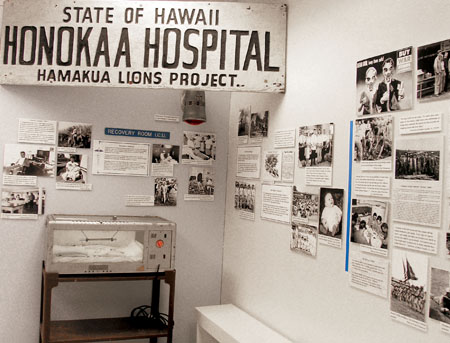
In addition to the permanent exhibit, the HC has mounted a series of rotating themed exhibits, the first being a commemoration of the 50th anniversary of the Peace Corps entitled Our Community and the Peace Corps. “What we discovered was that there were a lot of people in our community who had been in the Peace Corps, so a big section of the exhibit was on different people and where they served. They brought back artifacts from all over the world,” said Momi.
Waipi‘o Valley was also a training site for the Peace Corps. “We did the whole training in Waipi‘o Valley section. I also wanted to focus on people from the community that had done the training in the valley. They were pretty proud of that,” said Momi.
A museum is more than a collection of labeled items. When it is connected to the community as the HC is, it takes on a life of its own. This is what happened to create the next exhibit, Plantation Life on Hawai‘i Island: An Exhibit of Photographs by John and Ann Bowen, which opened in June 2012.
“John and Ann Bowen came to Hawai‘i in 1965 when John got a job as an agriculturalist with C. Brewer and Company. The Bowens set about documenting the plantation lifestyle by photographing and audio recording the everyday people who built the industry,” remembered Momi.
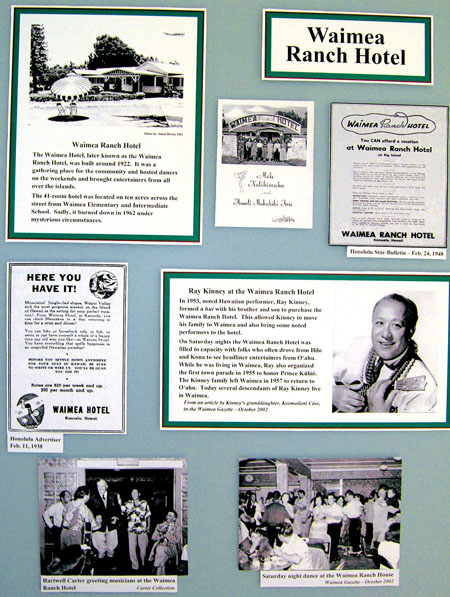
The exhibit itself came about through the serendipitous connections made by Hāmākua community member Kaye Lundberg, who happened to come across some of Bowens’ photos at the Laupahoehoe Train Museum. Kaye located the Bowens, invited them to meet Momi, and so began the collaboration that resulted in Plantation Life on Hawai‘i Island.
Under Momi’s guidance and with the assistance of Marie Kinchla and grad student Nicole Garcia, the HC exhibits strive to honor the unique contributions of various ethnic groups. In the process of mounting Honoka‘a Loves Music, Momi discovered the stories of the Filipino musicians who formed small bands and traveled up and down the coast, playing at the different camps and plantations.
This exhibit was followed by Nā Paniolo o Hāmākua that featured the small Portuguese ranchers who established cattle operations in Hāmākua, which was followed by Waipi‘o Valley: A Cultural Kipuka.
Infused with the spirit of community and cultural kīpuka, the exhibit opened with a quote by Davianna Pomaikai McGregor:
From these natural kīpuka come the seeds and spores for the eventual regeneration of the native flora upon the fresh lava. Rural Hawaiian communities may be regarded as cultural kīpuka from which native Hawaiian culture can be regenerated and revitalized in the contemporary setting.
Through oral histories and other sources, Momi looked at every aspect of life in the valley. “There was a store and they walked up and down the valley to go to school and there were all sorts of gathering places where people got together. The valley is only a mile wide and six miles long and yet there were seven heiau. It just gives you an idea of what a deeply spiritual place it is.”
Historically, with an estimated peak population of around 4,000, the cultivation of kalo (taro) and other foods have always been central to life in Waipi‘o Valley and beyond. “There’s records of drought when everywhere else was dry and Waipi‘o still had water. Waipi‘o was the breadbasket,” Momi said.
The valley itself, once the seat of government of High Chief Umi, is a many-storied metaphor for a long legacy of life-sustaining practices that have emerged from a spiritual connection to the natural world. But the impact of the exhibit was no metaphor. Prior to the exhibit, the Bishop Museum had announced plans to place some Waipi‘o lots on the market.
“It [Waipi‘o Valley: A Cultural Kipuka] was one of the most successful exhibits and a good tool. The Bishop Museum signs the leases for the taro farmers here, so a lot of the taro farmers came to the exhibit and the head of the board of directors and their attorney came down and saw the exhibit and I think it had an impact on the decision to pull the lots off the market,” said Momi.
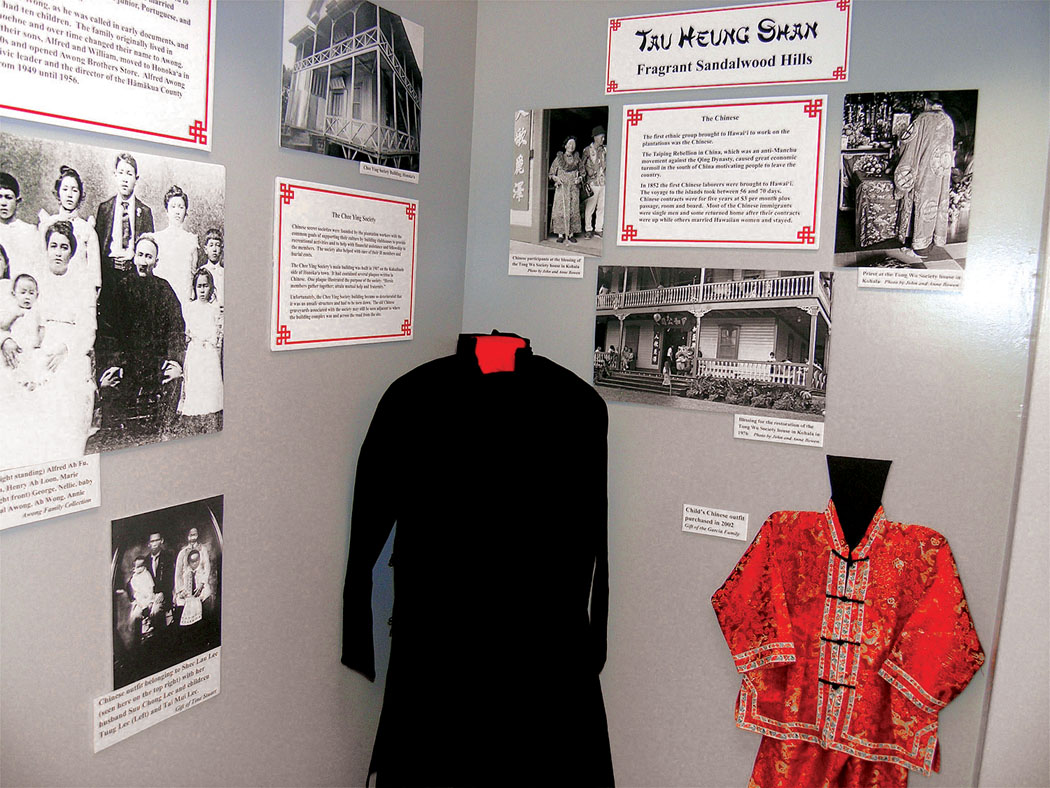
Outreach
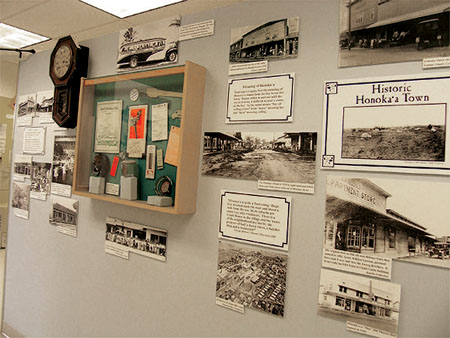
The approach of the HC dynamic has been flowing from the community to the museum and from the museum out into the community. In the nine years since it began, the HC has created over 30 special traveling exhibits.
“We’ve done a pā‘ū [skirt worn by women horseback riders] exhibit at Paniolo Preservation. We’ve done a photo exhibit at the Kohala Library of pictures Boone Morrison had taken of archaeological sites, and for the 2012 Waimea Cherry Blossom Festival, we created an exhibit honoring Japanese cowboys,” said Momi.
For the Kalo Festival that took place in Waipi‘o, HC brought the museum to the valley, setting up a tent with a series of historic photographs at the Waipi‘o lookout, generating much excitement for the upcoming Waipi‘o Valley: A Cultural Kipuka exhibit. “I want the changing gallery to be one where people can come in and go, ‘Oh thereʻs my aunty,’” said Momi.

Waimea Old and New
The current exhibit, entitled Maika‘i e ka ‘Āina o Waimea (good is the land of Waimea), opened in December and is a deep exploration of Waimea’s rich history.
Among many resources, the exhibit draws on Momi’s extensive preservation work within the Waimea community.

“I was the historic sites person in Waimea in the 70s, for what was then the Waimea Kawaihae Community Association, so I started photographing a lot of the old sites and collected a lot of the mo‘olelo [stories] of the area. This new exhibit gave me the opportunity to use a lot of that,” said Momi.
With chants and stories of the myriad Waimea rains running along the upper perimeter, you are welcomed into the exhibit with the oli and mo‘olelo of the goddess Wao and the journey of Hi‘iakaikapoliopele.
This is followed by a gallery of artifacts, photographs and stories gleaned from the web of resources Momi has gathered over the years and the center’s collection, as well as the contributions of community members. These have been expertly woven into sections that include ali‘i visits, natural history, original stores and families, Parker Ranch, Camp Tarawa, and coastal development.
The old Waimea is quickly fading away and hopefully this exhibit can raise awareness of some of the rich history of the town and surrounding areas. The exhibit will run through 2021 and can be viewed Monday to Friday from 9–4 and Saturday from 9–1.
The HC’s extensive archives that include maps, photos and documents are also available to anyone interested in doing their own North Hawai‘i historic research. ❖
Dr. Momi Naughton has spent her life connecting culture, communities, and museums. After completing her bachelor’s degree at the University of Hawai‘i at Hilo, Momi earned a master’s degree in anthropology from Western Washington University in 1983.
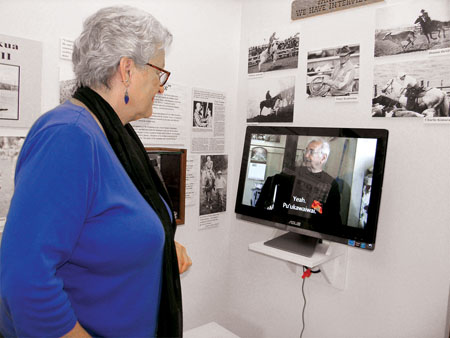
In 1985 she received a Kellogg Grant to study a team approach to exhibit development, which for her meant the inclusion of the people whose stories and artifacts were to be displayed. “It struck me that most of the major museums represented at the workshop that curated indigenous collections did not include people from the cultures whose artifacts they display as part of their exhibit team,” said Momi.
This approach was further bolstered when in 1990, Momi received a Fulbright Cultural Exchange Grant to go to Aotearoa (New Zealand) to study the Maori bicultural model for museums, where elders were consulted and decisions were made biculturally.
“Based on these experiences, I developed classes and internships at Western Washington University that gave students a hands-on experience in exhibit development. When the Hōkūle‘a and Hawai‘īloa voyaging canoes came to Bellingham in 1995, I had students working on numerous projects and exhibits involving the university, the community and the Lummi Indian Nation in cooperation with the Polynesian Voyaging Society.”
Momi received her doctorate in museum and heritage communications from Simon Frasier University in 2002 and after a position as curator of Anna Ranch archives and a teaching position at Kanu o Ka ‘Āina New Century Public Charter School, she began work at the Hāmākua Heritage Center (HHC) in 2011. Her strong belief in allowing the culture to tell their own stories is what makes the HHC a rich and dynamic source of our shared history.
“When I gave my presentation to the public before being hired, I told them that I would not interpret their history and culture but rather be a conduit for them to explore their own stories.”
For more information: 808.775.8890 or 808.969.8979
